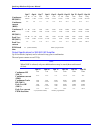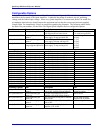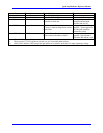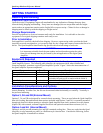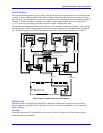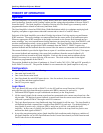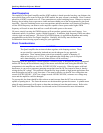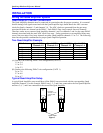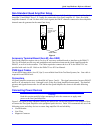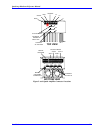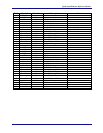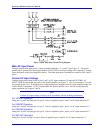
Quad Amp Hardware Reference Manual
Theory of Operation 13
Heat Dissipation
The capability of the Quad Amplifier and the IGBT modules is based upon the heat they can dissipate; the
more quickly heat can be removed from the IGBT module, the more current it can handle. Heat is created
whenever an IGBT is turned on or off. These transitions are called switching losses. Whenever current is
flowing, the switching losses represent a sizable and unavoidable part of the heat generated by the Quad
Amplifier. Since the switching losses occur on transitions and the transitions are a function of frequency,
a lower PWM frequency can mean a cooler amplifier capable of more power and a higher PWM
frequency will result in more heat and less overall deliverable power to the motor.
Of course, simply lowering the PWM frequency will not produce optimal results on all motors. Low
inductance motors, for instance, require a higher frequency. In addition, high frequency PWM can reduce
velocity ripple on small motors. The choice of a PWM frequency is application dependent and entirely
programmable on the Delta Tau Digital Amplifier. Similarly, this facility must be taken into
consideration when choosing a power rating for your application.
Shunt Considerations
CAUTION:
The Quad Amplifier has an internal shunt regulator with dumping resistors. These
are not sized for a particular load and may not be adequate for any particular
application. These internal shunt resistors are nominally capable of dumping 25
amps at low duty cycle (<25%). If the application has a high duty cycle or requires
more shunt dumping, an external shunt resistor will be necessary.
Depending upon the application, a shunt regulator is often necessary to dissipate the energy regenerated
into the DC bus by the stored kinetic energy of the motor and reflected load, during deceleration. The
components in the amplifier are rated for 410VDC/820VDC respectively. When the motor with load
decelerates, it can act as a generator, pumping current back into the DC bus instead of from it, thereby
raising the bus DC voltage. This problem is magnified for large spindle or high inertia applications that
must be brought to a halt in a very short time. Care must be taken to see that DC bus voltage does not
exceed 410VDC/820VDC. If DC bus voltage exceeds 410VDC/820VDC, nuisance over voltage may
occur and the amplifier could be damaged.
To prevent this, the shunt should be able to draw as much current from the DC bus as the motors are
capable of putting into it. The faster the motors are decelerated the greater the current. A spindle motor
using 60 amps continuously will require a shunt that can dump at least that much current. Refer to the
Delta Tau Soft Start and Shunt Resistor circuit board section of this manual for more information.



